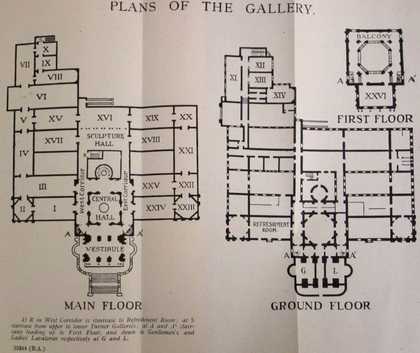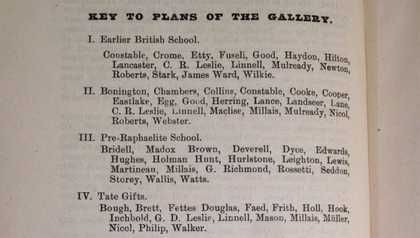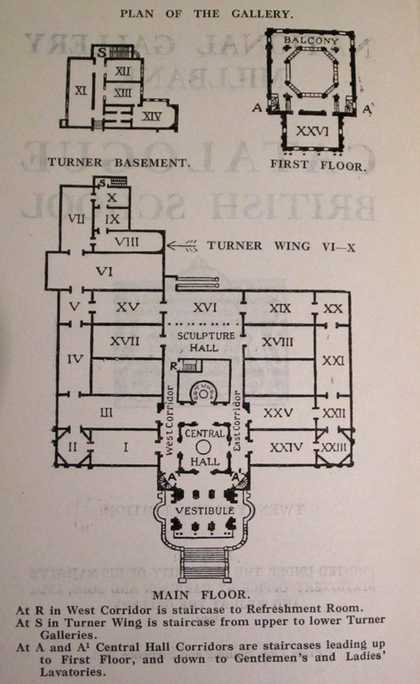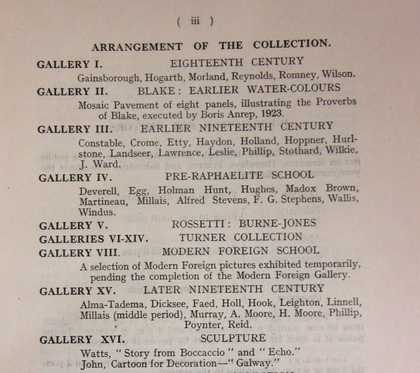The Tate Gallery at Millbank was officially opened by the Prince of Wales on 21 July 1897, with the public opening occurring over three weeks later on 16 August. Despite its official title of the National Gallery of British Art, it was more specifically a gallery of modern British art. The collection and initial displays were based on the collection of Sir Henry Tate (1819–1899), who contributed 65 of the 245 pictures on view. These were modern and contemporary British paintings and sculpture, by artists such as the Pre-Raphaelite painters Sir John Everett Millais (1829–1896) and John William Waterhouse (1849–1917).
Other pictures on display were acquired by the Chantrey Bequest, the fund for purchasing contemporary British art administered by the Royal Academy, and paintings were also sent to Millbank from the National Gallery in Trafalgar Square, who had taken on responsibility for the new gallery. The National Gallery decided that only ‘modern’ British pictures should be considered, defined as works by artists born after 1790.
Thus, two of the leading figures of British art, J.M.W. Turner (1775–1851) and John Constable (1776–1837), were not to be included (though a few Constables were allowed to give the gallery a good start). The opening of the new Turner wing in 1910 to accommodate paintings from the Turner bequest remedied this situation, and there were also earlier works by David Wilkie (1785–1841) and Henry Fuseli (1741–1825) on display. But for the first twenty years of the existence of the Tate there were no paintings in the collection or on display dating before 1790.
A plan of the gallery from 1914 shows the first room of the displays as the ‘Earlier British School’ but contained works by the nineteenth-century artists Constable, Crome, Etty, Fuseli, Good, Haydon, Hilton, Lancaster, C.R. Leslie, Linnell, Mulready, Newton, Roberts, Stark, James Ward, Wilkie. Anomalously, works by William Blake (1757–1827), a slightly earlier artist, were displayed in a separate gallery.
It was only after 1915 and the submission of the Curzon Report that the situation was addressed. In his analysis of the national collections Lord Curzon recommended that the Tate should take responsibility for housing modern foreign paintings and historic British art in addition to the modern and contemporary British painting it already contained, and proposed a rationalisation of the collecting policies pursued by the Tate, National Gallery, Victoria & Albert Museum and The British Museum.
This resulted in the transfer in 1919 of over two hundred historic British pictures from the National Gallery to the Tate, including the first works by Hogarth: The Beggar’s Opera; Benjamin Hoadly; Lavinia Fenton; Sigismunda; and the Marriage A-la-Mode series. Whilst three seventeenth-century pictures were transferred as well (two portraits by Cornelius Johnson and Girl with a Parrot c.1670 by Peter Lely), it was the paintings by Hogarth that formed the starting point for the displays in room 1 of the Tate Gallery.
This remained the case for the next thirty years – British art as displayed at the Tate, founded as the National Gallery of British Art, began with Hogarth.




